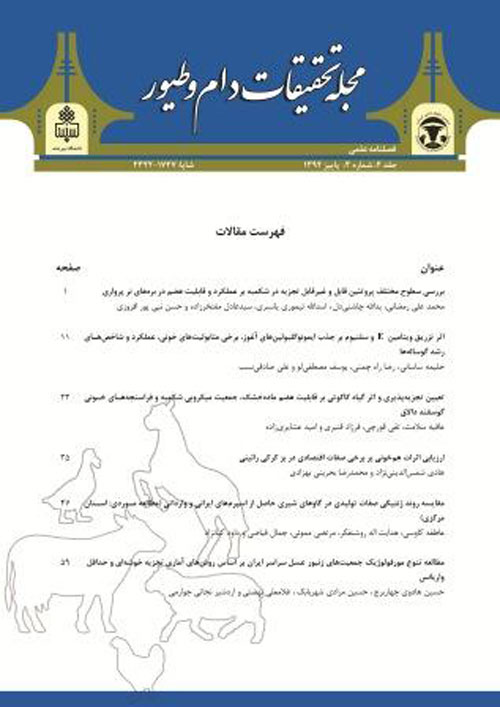Short communication: Economic analysis of ewe rearing in Chaharmahal and Bakhtiari province nomads
Author(s):
Abstract:
In this study, production, reproduction, management and economic characteristics were measured from the records collected on six flocks (with 1,228 head of breeding ewes) during an annual cycle of production in nomadic system to determine traits performance as well as economic analysis of ewe rearing by the nomads of Chaharmahal and Bakhtiari province.Sensitivity of revenues to changes in production levels and economic variables were analysed. Variable expenses represented about 56.86 % of total costs. Fixed (43.14 %) and labour expenses (37 %) had the highest percentage of total costs, respectively. Feed and transporting costs accounted for 15.35 and 2.74 % of total costs were at the next important costs. Revenue from selling live animals accounted for about 98.7 % while fleece weight selling was only 1.3 % of the total revenues. Profit per ewe per year was estimated to be -373,319 Rials. Economic efficiency of the system (0.9) indicated thatthe revenue from the ewe rearing in nomadic system only covered 90 % of the rearing costs. If lambing rate achieves more than 150 % then economic efficiency will become more than 1 and as a consequence revenues willcoverthe costs of the system and profit isexpected to become positive. If price per kilogram lamb live weight increases from 100,000 to 115,000 Rials then production revenues will become equal to its costs. With respect to economic conditions of the country, number of weaned lambs per ewe in nomadic system is needed to be increased through management and breeding improvement if the job is profitably expected to go on.
Keywords:
Sheep , Economical analysis , Profit , nomad , Production
Language:
Persian
Published:
Journal of Livestock Research, Volume:3 Issue: 1, 2014
Page:
75
https://magiran.com/p1333441
مقالات دیگری از این نویسنده (گان)
-
The effect of reducing the length of the lighting period in late pregnancy on milk production and related hormones in native black goats
MOHSEN BAGHERI *, Morteza Karami, Najme Eslamian Farsuni, Golnaz Taasoli
Journal of Animal Science Research, -
Effect of artificial change of day length before and after parturition on milk production, and melatonin, prolactin, and IGF-1 hormones in native goats of Chaharmahal and Bakhtiari province
M. Bagheri *, M. Karami
Animal Production Research,



